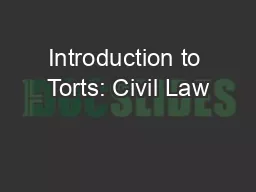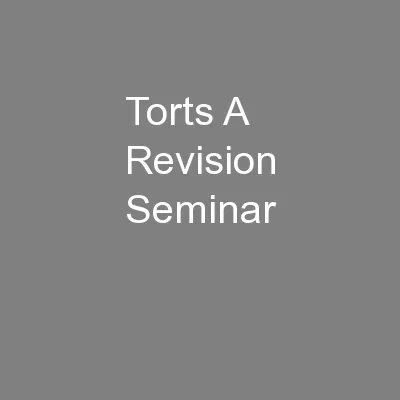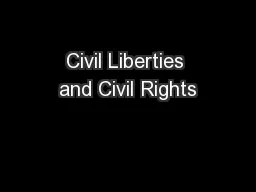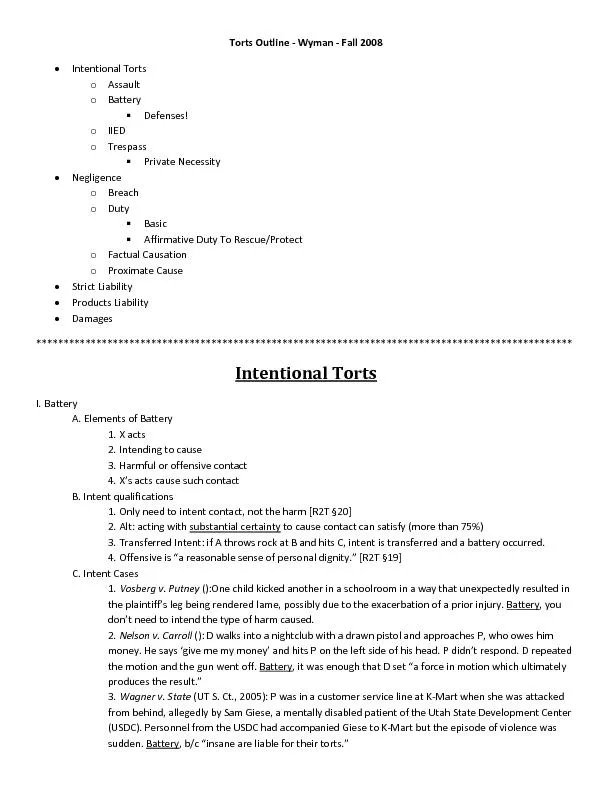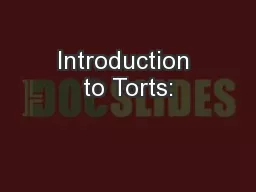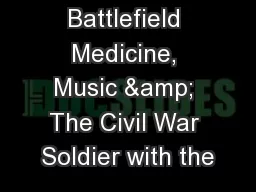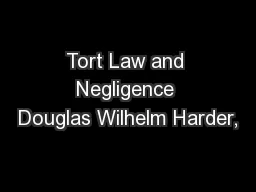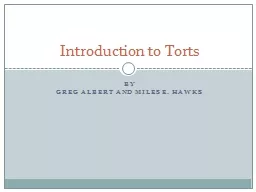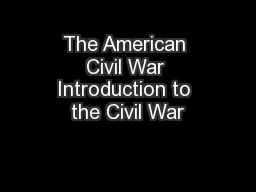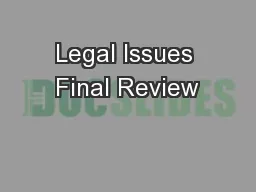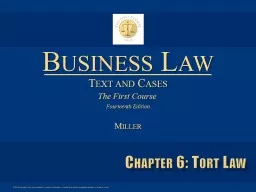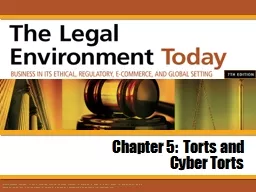PPT-Introduction to Torts: Civil Law
Author : giovanna-bartolotta | Published Date : 2018-02-26
Crimes vs Torts A crime is a public wrong committed against society in addition to the specific victim A tort is a private wrong committed against an individual
Presentation Embed Code
Download Presentation
Download Presentation The PPT/PDF document "Introduction to Torts: Civil Law" is the property of its rightful owner. Permission is granted to download and print the materials on this website for personal, non-commercial use only, and to display it on your personal computer provided you do not modify the materials and that you retain all copyright notices contained in the materials. By downloading content from our website, you accept the terms of this agreement.
Introduction to Torts: Civil Law: Transcript
Download Rules Of Document
"Introduction to Torts: Civil Law"The content belongs to its owner. You may download and print it for personal use, without modification, and keep all copyright notices. By downloading, you agree to these terms.
Related Documents

